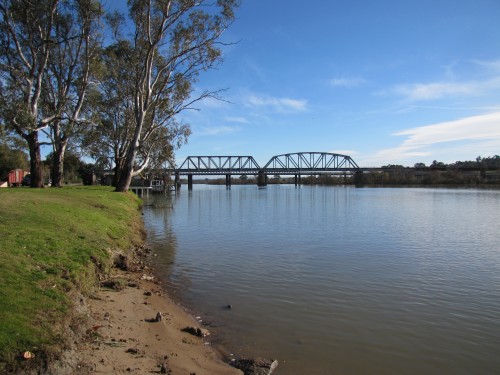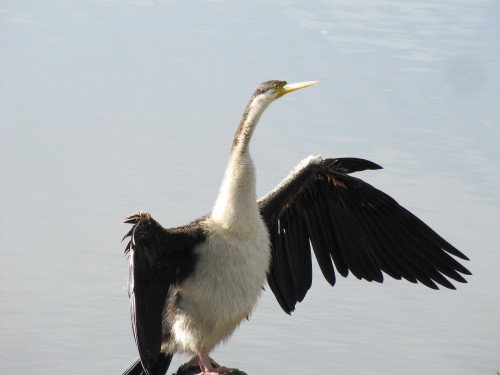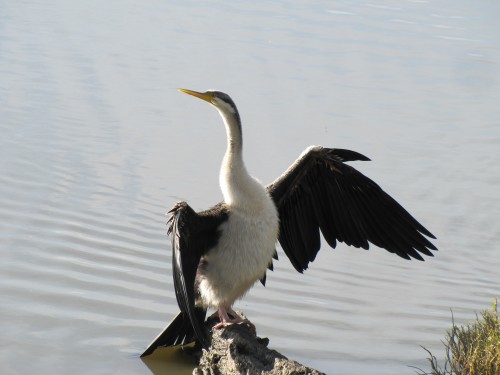Review: Brushed by Feathers
Review: Brushed by feathers: a year of birdwatching in the west by Frances Wood (2004, Fulcrum Publishing, Colorado).
What a delightful book. I was given a copy by someone (a friend of a friend) who attended one of my bird talks. I am normally reluctant to let people lend me books to read, no matter how interesting the subject matter because I have so many books and magazines of my own waiting for my attention. Still, out of politeness I accepted this title, and I’m so pleased that I did.
At first I only read a few pages in bed before turning off the light. As I moved further into the text I became hooked – no, spellbound. This is one special book, and all about birds I know nothing about. The author lives on Puget Sound in Washington State near the Pacific Ocean. It is a significant body of water for many water-bird species and the hinterland a passageway for many other migrating species.
The book is an account of a year, month by month, in the birding life of one small area: the author’s small acreage around her home – with occasional trips elsewhere or reminiscing accounts of earlier trips and experiences. From the Barn Swallows nesting under the eaves to various hummingbirds visiting her feeder through to rare encounters, the author takes the reader on a journey of wide-eyed, wondering and fascinated observations of the daily lives of her feathered friends.
Her descriptions of the house and garden, the local environment, weather and daily happenings take the reader into her confidence until we feel almost part of her family. Her lyrical style draws the reader on from bird to beautiful bird, each described with care – as if each was her personal favourite.
The author’s web page can be seen here.
Highly recommended.
Darter at Sturt Reserve, Murray Bridge
Over the last few days I have been sharing some of the photos I took several weeks ago when I took time out from my busy schedule to do some birding. Despite being a chilly winter’s day, the conditions were quite acceptable and it was good to feel some sunshine after all the dull wet weather we’ve had so far this year.
One of the birds I enjoy seeing most times along the Murray River here in Murray Bridge is the Darter, shown in the photos below. One has to be quick to see this species in the water when it’s fishing. It dives quickly and often stays under water for a considerable length of time. After every period of feeding, every Darter and every cormorant needs to find a suitable perch and “hang out the washing”, that is, they need to dry their wings before they become waterlogged and drown.
I was able to approach this individual to within five metres as it perched there. Interestingly, this one appears to be an immature female, going by the plumage.
A wonderful welcome home
We’ve been away visiting family in Sydney for the last few weeks. It was lovely to play with my 2.5 year old grandson. Over the coming few weeks I’ll be writing more about the birds I saw there and on the drive over and back. We covered 2910km by car over 5 days, so I’ve lots to share. Stay tuned.
On the morning after arriving home I took out a basket of washing to hang on the clothes line. Quite close to our back veranda I disturbed a Peaceful Dove feeding on the ground. This was the closest to the house I’ve observed this species. It was a wonderful – and peaceful – welcome home. The bird flew off a short distance and landed in a nearby tree. It sat there for a few moments, giving its soft peaceful “doodle-doo” call. Love that.
While this species is widespread in our district we don’t always have it present in our garden. At best it is an occasional visitor. Pity about that; I’d love to have it here all the time.
Good birding.
Wedge-tailed Eagle overhead

I had to admit to my wife last week that I really enjoy hanging out the washing.
The reason is simple: it gets me outdoors, eyes cast skywards. Some of my best birding moments have occurred while hanging out the washing.
Last week was one of those moments. I had barely commenced when my attention was caught by a bird of prey high in the sky. It was obviously an eagle, slowly riding the air currents and circling overhead. I raced inside for the binoculars, sure that it was a Wedge-tailed Eagle. A more passes overhead confirmed my first identification.
This magnificent raptor – our largest bird of prey – is widespread all over Australia. It is widespread in our region too, but not common. Their territories are often huge, and they soar for many kilometres each day searching for their food. Despite them being relatively common in our region, this is only the third time in over 25 years I’ve observed one over our property. I need to get outdoors more often!
The nest of the Wedge-tailed Eagle consists of many sticks and twigs and can be reused many times in the lives of a pair. They will often refurbish the original nest, adding many more sticks until the structure is huge, sometimes large enough for a human adult to lie down in. The nearest nest I know of is about 20km NW of home near the Mannum waterfalls reserve.
Related articles:
What a thriller – it’s a White-winged Triller
I had just hung out the washing this morning and was on my way back inside. A different bird call drew my attention so I raced inside for the camera and binoculars. Sure enough, we had a male White-winged Triller in our small patch of mallee scrub. This species is an irregular visitor here, usually in the spring or summer.
White-winged Trillers can be seen throughout most of mainland Australia and northern Tasmania. In my experience they are widespread but not common, and certainly not found in large numbers, usually seen singly or in pairs. They also occur in Papua New Guinea and Indonesia. They are a breeding migrant in the southern parts of the country. In the winter months they spend time in the northern and inland regions.
The call is a rich, far reaching, descending ‘chip-chip-chip-joey-joey-joey.’
Related articles:









